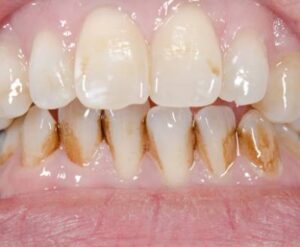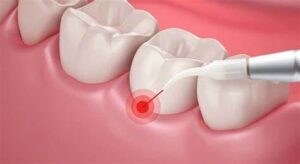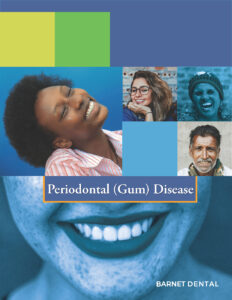New York University College of Dentistry
Contact
Hours
- Monday: 9:00am – 9:00pm
- Tuesday: 9:00am – 6:00pm
- Wednesday: 9:00am – 9:00pm
- Thursday: 9:00am – 9:00pm
- Friday: 9:00am – 5:00pm
New York University College of Dentistry (NYU Dentistry), located in the heart of New York, New York, is a prestigious institution dedicated to excellence in dental education, research, and patient care. As one of the leading dental schools in the world, NYU Dentistry is committed to preparing future dental professionals through innovative educational programs, cutting-edge research initiatives, and comprehensive clinical experiences. Our faculty comprises esteemed educators, clinicians, and researchers who are dedicated to advancing the field of dentistry and improving oral health outcomes for individuals and communities.
Educational Programs
Dental Degree Programs
- Doctor of Dental Surgery (DDS): Comprehensive program designed to provide students with a solid foundation in dental science, clinical skills, and ethical practice.
- Advanced Dental Education: Specialized postgraduate programs offering advanced training in areas such as orthodontics, periodontics, endodontics, and oral surgery.
Continuing Education
- Professional Development: Continuing education courses and seminars for practicing dentists to enhance their clinical skills, stay updated on the latest advancements in dental research, and meet licensure requirements.
- Specialized Training: Advanced training programs for dental specialists seeking to further develop their expertise in specific areas of dentistry.
Clinical Services
Patient Care
- Comprehensive Dental Care: Range of preventive, restorative, and cosmetic dental services provided by faculty-supervised students and experienced dental professionals.
- Specialty Care: Specialized treatment options for complex dental conditions, including orthodontics, periodontics, endodontics, and oral surgery.
Community Outreach
- Public Health Initiatives: Collaborative efforts with community organizations to promote oral health education, provide dental screenings, and deliver preventive services to underserved populations.
- Community Service: Participation in outreach programs and volunteer initiatives to address the oral health needs of underserved communities and improve access to dental care.
Research and Innovation
Scientific Inquiry
- Translational Research: Conducting cutting-edge research to translate scientific discoveries into clinical applications for improved patient care and outcomes.
- Interdisciplinary Collaboration: Collaborating with other academic institutions and research centers to advance knowledge in various areas of dental science and medicine.
New York University College of Dentistry is dedicated to advancing the field of dentistry through education, research, and patient care. Through our commitment to excellence and innovation, we strive to improve oral health outcomes and make a positive impact on the well-being of individuals and communities locally and globally.
Tooth Discoloration
Tooth discoloration is a common dental concern characterized by changes in the color of the teeth, which can occur due to various factors affecting the enamel, dentin, or pulp tissues. Discoloration can manifest as stains, spots, or overall changes in tooth color, ranging from yellow or brown discoloration to gray, black, or blue hues. Understanding the causes and types of tooth discoloration can help guide appropriate management and treatment options.
Here are some key points about tooth discoloration:
- Extrinsic Discoloration: Extrinsic discoloration occurs when stains or pigments accumulate on the surface of the enamel, typically due to external factors such as dietary habits, oral hygiene practices, or environmental exposures. Common causes of extrinsic discoloration include:
- Food and beverages: Consumption of deeply pigmented foods and drinks such as coffee, tea, red wine, berries, or curry can lead to extrinsic staining of the teeth over time.
- Tobacco use: Smoking or chewing tobacco products can result in extrinsic staining and discoloration of the teeth, often manifesting as brown or yellowish stains on the enamel surface.
- Poor oral hygiene: Inadequate brushing, flossing, or professional dental cleanings can allow plaque and tartar buildup on the teeth, contributing to extrinsic discoloration and surface stains.
- Intrinsic Discoloration: Intrinsic discoloration occurs when changes in the internal structure or composition of the tooth tissues affect the overall color of the tooth from within. Common causes of intrinsic discoloration include:
- Developmental factors: Genetic anomalies, enamel defects, or excessive fluoride intake during tooth development can lead to intrinsic discoloration of the teeth.
- Aging: As individuals age, the enamel layer may wear down, exposing the underlying dentin, which is naturally yellowish or brown in color, resulting in intrinsic discoloration and a darker appearance of the teeth.
- Trauma or injury: Dental trauma, such as falls, accidents, or sports injuries, can disrupt blood flow to the developing teeth or cause internal hemorrhage, leading to intrinsic discoloration or tooth darkening over time.
- Medications: Certain medications or medical treatments, such as tetracycline antibiotics (when taken during tooth development), chemotherapy, or radiation therapy, can cause intrinsic discoloration of the teeth, particularly in children or adolescents.
- Combined Discoloration: In some cases, tooth discoloration may result from a combination of extrinsic and intrinsic factors, where surface stains accumulate on the enamel surface, while underlying structural changes contribute to internal discoloration.
- Diagnosis: Diagnosis of tooth discoloration involves a thorough clinical examination, assessment of medical and dental history, and identification of potential causative factors. Dental X-rays and other diagnostic tests may be performed to evaluate the internal structure of the teeth and rule out underlying pathology or anomalies contributing to discoloration.
- Treatment: Treatment of tooth discoloration depends on the underlying causes and severity of the discoloration. Management options may include:
- Professional dental cleanings to remove surface stains and plaque buildup.
- Teeth whitening treatments to lighten and brighten the enamel surface.
- Dental restorations such as veneers or crowns to cover or mask intrinsic discoloration.
- Prevention measures such as proper oral hygiene practices, dietary modifications, and lifestyle changes to minimize the risk of tooth discoloration.
In summary, tooth discoloration can result from a variety of factors affecting the enamel, dentin, or pulp tissues. Diagnosis and treatment of tooth discoloration require a comprehensive approach to address both surface stains and underlying structural changes, with management options ranging from professional dental cleanings and teeth whitening to dental restorations and preventive measures to maintain oral health and aesthetics.
Gum Disease Treatment
Gum disease, also known as periodontal disease, is a common oral health condition characterized by inflammation and infection of the gums and surrounding tissues. If left untreated, gum disease can lead to serious complications, including tooth loss and systemic health issues. Here's an overview of gum disease treatment and its key aspects:
- Early Detection and Diagnosis:
- Early detection of gum disease is crucial for successful treatment and prevention of further progression.
- During a dental examination, the dentist or dental hygienist will assess the health of your gums, measure periodontal pockets (spaces between the gums and teeth), and look for signs of inflammation, bleeding, or gum recession.
- Diagnostic tests, such as dental X-rays or periodontal probing, may be performed to evaluate the extent of gum disease and identify any underlying bone loss.
- Non-Surgical Treatments:
- In the early stages of gum disease (gingivitis), non-surgical interventions may be sufficient to control the infection and restore gum health:
- Professional Dental Cleaning: Thorough cleaning of the teeth and gums (scaling and root planing) to remove plaque, tartar (calculus), and bacteria from above and below the gumline.
- Oral Hygiene Education: Instruction on proper brushing and flossing techniques, as well as the use of antimicrobial mouth rinses or interdental cleaning aids to maintain oral hygiene at home.
- Antibacterial Therapy: Prescription or over-the-counter antimicrobial agents, such as mouth rinses or gels containing chlorhexidine or prescription antibiotics, may be recommended to reduce bacterial plaque and inflammation.
- Lifestyle Modifications: Encouragement to quit smoking, manage stress, eat a balanced diet, and adopt healthy lifestyle habits to support gum health and overall well-being.
- Surgical Treatments:
- In cases of advanced gum disease (periodontitis) or when non-surgical methods are insufficient, surgical interventions may be necessary to address deep pockets, gum recession, and tissue damage:
- Pocket Reduction Surgery (Flap Surgery): Surgical removal of diseased gum tissue and bacteria from periodontal pockets, followed by reshaping and suturing of the gums to eliminate pockets and promote tissue reattachment.
- Gum Grafting: Transfer of healthy gum tissue from one area of the mouth (usually the palate) to areas with gum recession to cover exposed tooth roots and enhance gum aesthetics and stability.
- Bone Grafting: Placement of bone graft material to regenerate lost bone support and restore the integrity of the jawbone damaged by periodontal disease.
- Guided Tissue Regeneration (GTR): Placement of biocompatible membranes or grafting materials to encourage the regeneration of bone and periodontal tissues lost due to gum disease.
- Maintenance and Follow-Up Care:
- After gum disease treatment, regular maintenance and ongoing periodontal therapy are essential to prevent disease recurrence and maintain long-term oral health:
- Periodontal Maintenance Visits: Scheduled follow-up appointments with the dental hygienist for professional cleaning, monitoring of periodontal health, and reinforcement of oral hygiene instructions.
- Periodontal Monitoring: Routine periodontal examinations and assessments to monitor the stability of gum health, evaluate the effectiveness of treatment, and identify any signs of disease recurrence or progression.
- Collaboration with Specialists: Referral to periodontists (gum specialists) or other dental specialists for complex cases or advanced treatments requiring specialized expertise.
- Systemic Health Considerations:
- Research has shown that gum disease is associated with an increased risk of systemic health conditions, such as cardiovascular disease, diabetes, respiratory infections, and adverse pregnancy outcomes.
- Treating gum disease may contribute to improved overall health and well-being by reducing inflammation, lowering systemic inflammation markers, and potentially lowering the risk of associated systemic diseases.
In summary, gum disease treatment aims to control infection, reduce inflammation, restore gum health, and prevent further damage to the teeth and supporting structures. By implementing appropriate treatment strategies, practicing good oral hygiene, and receiving ongoing professional care, individuals can manage gum disease effectively and maintain optimal oral health for a lifetime.




